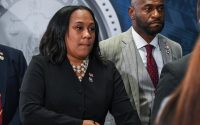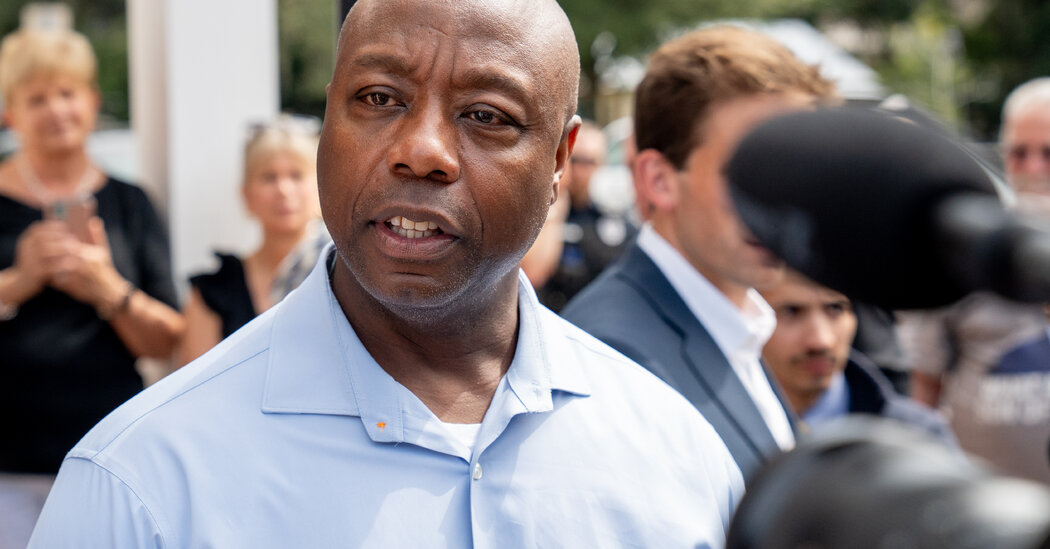The Question After Every Mass Shooting: How Much Do We Deserve to Know?
After every mass shooting it comes: recordings of pleading 911 calls, photos of the scene, grim evidence released by law enforcement. This tsunami of investigative detail could save lives, but it inflicts fresh agony on the families of the dead.
Increasingly, survivors ask: What does the public have a right to know about their loved ones’ deaths, and at what cost to them?
Grieving families in Nashville have been seeking these answers in court. After the March 27 shooting death of six people, including three 9-year-olds, at the Covenant School in the city’s Green Hills neighborhood, some 100 family members of the victims and their classmates want a judge to bar public release of the shooter’s handwritten journals and other information.
“There is no compelling state interest in giving voice to a horrendous criminal,” the parents said in recent court filings.
A group including The Tennessean newspaper, the Tennessee Firearms Association — whose legal effort is backed by the conservative group Judicial Watch — and a state senator say release of the information is required under state public records laws. The City of Nashville and its police department say the writings’ release could endanger an ongoing investigation. The families, school and church add that the release would deepen the survivors’ pain, and could encourage copycat attacks.
“It is certainly true that oftentimes mass shooters are learning and taking their cues from past incidents, strategies and manifestoes,” said Bruce Shapiro, executive director of the Dart Center for Journalism and Trauma at the Columbia University Graduate School of Journalism, which encourages new approaches to reporting on violence and conflict.
“But as a journalist devoted to reporting that makes mass shootings less likely, I fear that states or courts blocking access to basic evidence, facts and background about these acts of brutality could lead us to ineffectual, inappropriate or dangerous policies.”
The judge, Chancellor I’Ashea L. Myles of the Chancery Court in Tennessee’s Davidson County, has called the battle “uncharted territory,” while ruling that the families have standing in the case. The news outlets and organizations are appealing that decision, which has delayed a hearing before Chancellor Myles, originally scheduled for this summer, likely until at least the fall.
Freedom of information advocates question the school’s presence in the case on the families’ side. The shooter previously attended the school.
“It should be a warning sign when an institution, which may or may not have done everything to protect its student body, is trying to shut down access,” Mr. Shapiro said.
Lawyers for the Covenant families say the case represents “a unique opportunity following a mass murder at an elementary school to prevent the shooter’s writings and anything else that is likely to inspire future attacks from being released and causing pain and suffering to the victims.”
The same debate convulsed Connecticut a decade ago, after the 2012 shooting at Sandy Hook Elementary School in Newtown.
Besieged by conspiracy “researchers” after the massacre, officials struggled to protect the families of 20 slain first graders and six educators in the face of demands for records they were legally required to provide. A Newtown clerk refused to release death certificates, in defiance of open records rules.
Connecticut’s Freedom of Information Commission fields all public records requests. Shortly after the shooting, a state legislator called Colleen Murphy, its executive director and general counsel, convinced that the filmmaker Michael Moore was seeking crime scene photos of the children. But Ms. Murphy told the lawmaker her office had received no such inquiry.
The concerns had been set off by a blog post in which Mr. Moore, whose documentary “Bowling for Columbine” focused on the 1999 Colorado high school massacre, opined that releasing the victims’ images might spur action on gun control. He noted Mamie Till-Mobley’s 1955 decision to display the brutalized body of her 14-year-old son Emmett Till, who had been tortured and lynched by two white men in Mississippi, at his open-casket funeral and in JET magazine photographs. The images helped ignite the civil rights movement.
Some Sandy Hook families interpreted Mr. Moore’s remarks as “a horrific campaign to make the crime scene photos public,” Jennifer Hensel, whose 6-year-old daughter Avielle Richman died, wrote in the New Haven Register. “We cannot stand the thought of seeing the graphic depiction of our child’s death promoted to serve anyone’s political purposes.”
Mr. Moore publicly clarified his view that no one should release photos without the families’ permission. But the families circulated a change.org petition and rallied in Hartford for legislation that would prevent the release of photos, video or other digital recordings depicting any victim without permission from the immediate family. The Connecticut legislature began work in secret on legislation that would have effectively ceded control over the release of homicide records commonly available under public records laws to victims’ families, including audiotapes of 911 calls in which victims are heard or identified. The proposed measure met with strong objections from First Amendment advocates, Ms. Murphy and media organizations, including The Hartford Courant, which fought in court for five years before winning access to information about the shooter that had been gathered by state police.
The legislation was subsequently scaled back. Yet even today those requesting Connecticut homicide-related records must demonstrate that the release does not constitute an “unwarranted invasion of privacy.”
“We still struggle with that,” Ms. Murphy said in an interview. In Nashville, she added, “what initially struck me is the scope of it. You’re not only looking at the family members but quite an extended circle of people” seeking to bar release of the shooter’s writings.
While the judge appears to be trying to spare the community further pain, she said, “on what basis would she not order disclosure? Would it be on a privacy basis, public policy basis or morality basis?”
In the Sandy Hook case, Lenny Pozner, the father of 6-year-old Noah Pozner, who died in the shooting, released Noah’s death certificate and post-mortem examination to combat the conspiracy theories tormenting the families.
But he waited more than a year after the shooting to do so. Today he favors a similar waiting period.
“There’s no great need for everything to come out right away,” particularly during an investigation, he said in an interview. “It’s not going to bring back the dead, and all it does is reinjure those who are most injured.”
Mr. Shapiro of the Dart Center said that survivor families rarely agree on what information should be released and when. Initially, the Covenant families asked that at the very least the shooter’s writings not be released until the end of the school year — now a moot point since the school has recessed for the summer and the hearing has yet to begin. Last month the family of the Covenant shooter said they had given legal ownership of the shooter’s journals to the parents involved in the suit, but the documents themselves are still in the possession of Nashville police.
“Timing is a legitimate argument to have in newsrooms and part of the array of journalistic decisions that we have to make,” Mr. Shapiro said.
“We should be listening to survivor voices when we make our decisions about timing. But I don’t think the state or courts should be dictating that, either.”
Emily Cochrane contributed reporting from Nashville.


